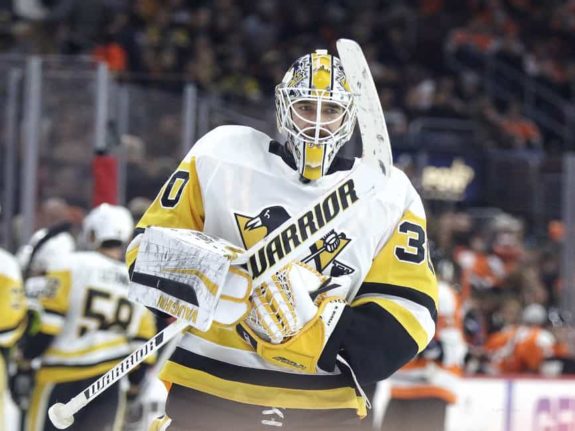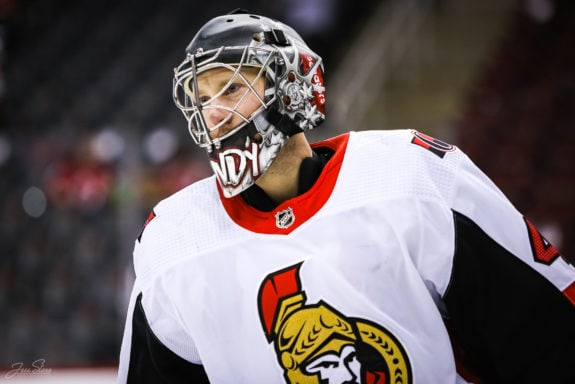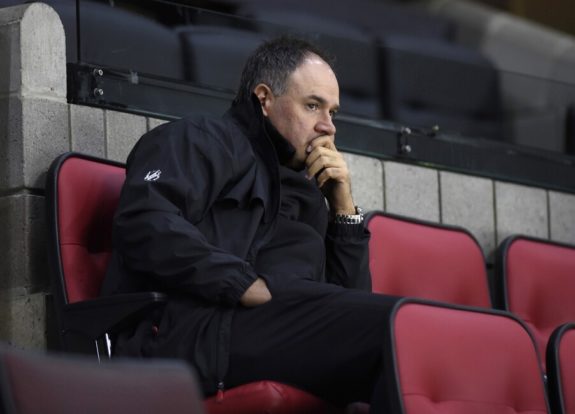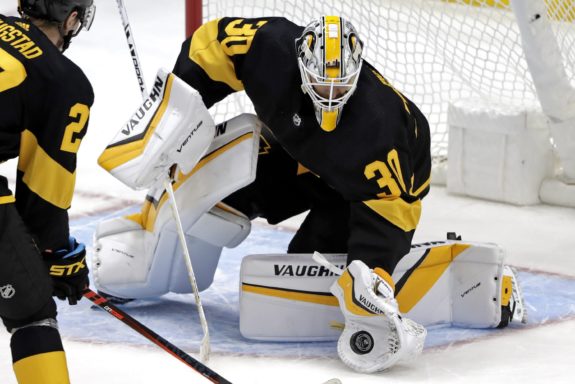Make no mistake — Matt Murray is now the Ottawa Senators’ most important player. The success or failure of the Senators’ rebuild depends primarily on the performance of their new goalie.

Of course, there are other core players that need to meet or exceed expectations in order to expedite Ottawa’s progress and transition from a rebuilding phase to playoff contention.
NHL minutes-leader Thomas Chabot carries the team’s largest cap hit ($8 million) and plays in every key situation. Brady Tkachuk led the team in points, hits and shots last season, and he’s one of the league’s best players aged 21-and-under. Ottawa acquired a ton of talent through trades, the draft and free agency this offseason, but Murray is central to the team’s success.
Related: Ranking the Senators’ 1990s 1st-Round picks
After finishing last season with the second-worst record in the league, the Senators had no shortage of weaknesses to address. They scored at a bottom-10 rate, took the eighth-most penalties, and their special teams performance was especially dreadful.
Goaltending Grief
However, it was Ottawa’s inability to keep the puck out of their own net that was by far their most glaring deficiency.
| 2019-20 Senators | League Average | |
| Goals Against/Game | 3.35 (30th) | 2.98 |
| Goals Against (5v5) | 159 (29th) | 139 |
| Penalty Kill (%) | 76.09 (28th) | 79.97 |
| Shots Against/Game | 33.6 (29th) | 32.4 |
Yikes.
It’s hard to win hockey games when your opponents score at will. The Senators’ goaltending committee of Craig Anderson, Anders Nilsson and Marcus Hogberg was not entirely to blame; Ottawa’s undisciplined play put the defence on their heels and their goalies in scramble mode far too often.
The Senators allowed the seventh-most scoring chances (1,545) and the sixth-most high-danger scoring chances against (473) last season. Ottawa’s trio actually saved those high-danger chances at a rate just below league average (87.4%), but other aspects of their performance were severely lacking.
Through 71 games, Ottawa’s goalies combined for zero shutouts. They were the first team to be shut out of the shutout column since the 21-win Buffalo Sabres in 2013-14.
The Senators’ netminders also struggled to make timely saves. They allowed the first goal 44 times last season — the worst mark in the league — and won just one-quarter of those games. When Ottawa got a lead, they couldn’t hold it; the Senators had the league’s third-lowest win percentage (51.9%) when scoring first.

That’s not to say the Senators were devoid of talent between the pipes. There is untapped potential and bright futures among their prospects. Anderson was a consistent presence in Ottawa’s net for a decade before the Senators decided not to re-sign him. Owner Eugene Melnyk made it clear that he expects the Senators to compete for a Stanley Cup within the next few years, and for that to happen, they needed an immediate and substantial upgrade.
Sending a Message
Ottawa had plenty of options in a flooded market. Multiple proven goaltenders hit free agency facing a flat cap, leaving many teams short on the resources necessary to offer substantial contracts. Instead of waiting for free agency to open and chasing a highly touted option like Jacob Markstrom or Braden Holtby, Ottawa got aggressive.
On the second day of the NHL draft, two days before the start of free agency, the Senators traded Jonathan Gruden and a second-round pick to the Penguins for Murray.
Despite winning two Stanley Cups with the Penguins, Murray was not extended before hitting restricted free agency — Pittsburgh opted to move forward with Tristan Jarry instead. Ottawa’s general manager Pierre Dorion was unable to discuss contract terms with Murray or his agent during negotiations with Pittsburgh, but paid the steep price anyways.

“We know how important the goaltending position is,” Dorion said after trading for Murray. “Matt has played in high-pressure moments and will stabilize our defence… he’s someone who really wanted to be here.”
The Senators showed just how mutual that feeling was when they signed him to a four-year, $25 million contract on Oct. 9. Markstrom was the only goalie to sign for more (six years, $36 million), but Murray got a higher average annual value ($6.25 million) and a 10-team no-trade clause.
“It’s an important message to our fans and our players.” Dorion added. “We’re in it to win.”
The Missing Piece
The Senators and Detroit Red Wings were the only teams that missed the playoffs in each of the last three seasons, while there are 10 teams that have qualified for each of the previous three postseasons, including the 2019-20 Qualifying Round.
| Missed Playoffs (2 teams) | Made Playoffs (10 teams) | Matt Murray (career) | |
| Save Percentage | .897 | .910 | .914 |
| Goals Against Average | 3.44 | 2.54 | 2.67 |
(Created by David Crosby)
Murray has seen some statistical drop-off recently; his average numbers over the last three seasons: a .908 save percentage and 2.83 goals against average. However, 2019-20 was his only poor season, and there are indications he will improve in Ottawa.
The two-time champion has a history of playing his best hockey in the playoffs, and that trend continued in the Qualifying Round. The Penguins struggled, but Murray was solid.
| 2019-20 Qualifying Round | Career (Playoffs) | |
| Save Percentage | .914 | .921 |
| Goals Against Average | 2.50 | 2.18 |
Return to Form
Perhaps the biggest question is health; Murray has never played more than 50 games in a single season (excluding playoffs). He was placed on injured reserve three times from 2016-2018, due to a broken hand and a pair of lower-body injuries that sidelined him for a total of six weeks. Murray also suffered three concussions by the age of 24, forcing him to miss more than a month of play.
Last season, Murray began working with a new personal goaltending coach, Adam Francilia.
“We’ve identified some structural deficiencies that weren’t allowing him to create the foundation of stance that he should have,” Francilia told Sportsnet’s Elliotte Friedman. “A couple of hiccups were affecting his biomechanics.”
Those changes seem to have paid dividends. Murray did not suffer any serious injuries last season and heads into his debut campaign with Ottawa fully healthy and motivated.

“I see a really good fit here,” Murray told reporters shortly after his trade to Ottawa. “This is a young team stacked with talent and absolutely heading in the right direction.”
Related: Senators’ Goaltending Showdown – Lalime vs. Anderson
The Senators took a big risk betting that Murray can take this team to the next level, and Ottawa’s success largely depends on whether he can hold up his end of the bargain.
The Senators are confident their faith will be rewarded — Murray has proven he’s at his best when the stakes are high.
*All stats came from Hockey-Reference and NHL.com